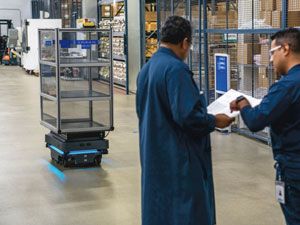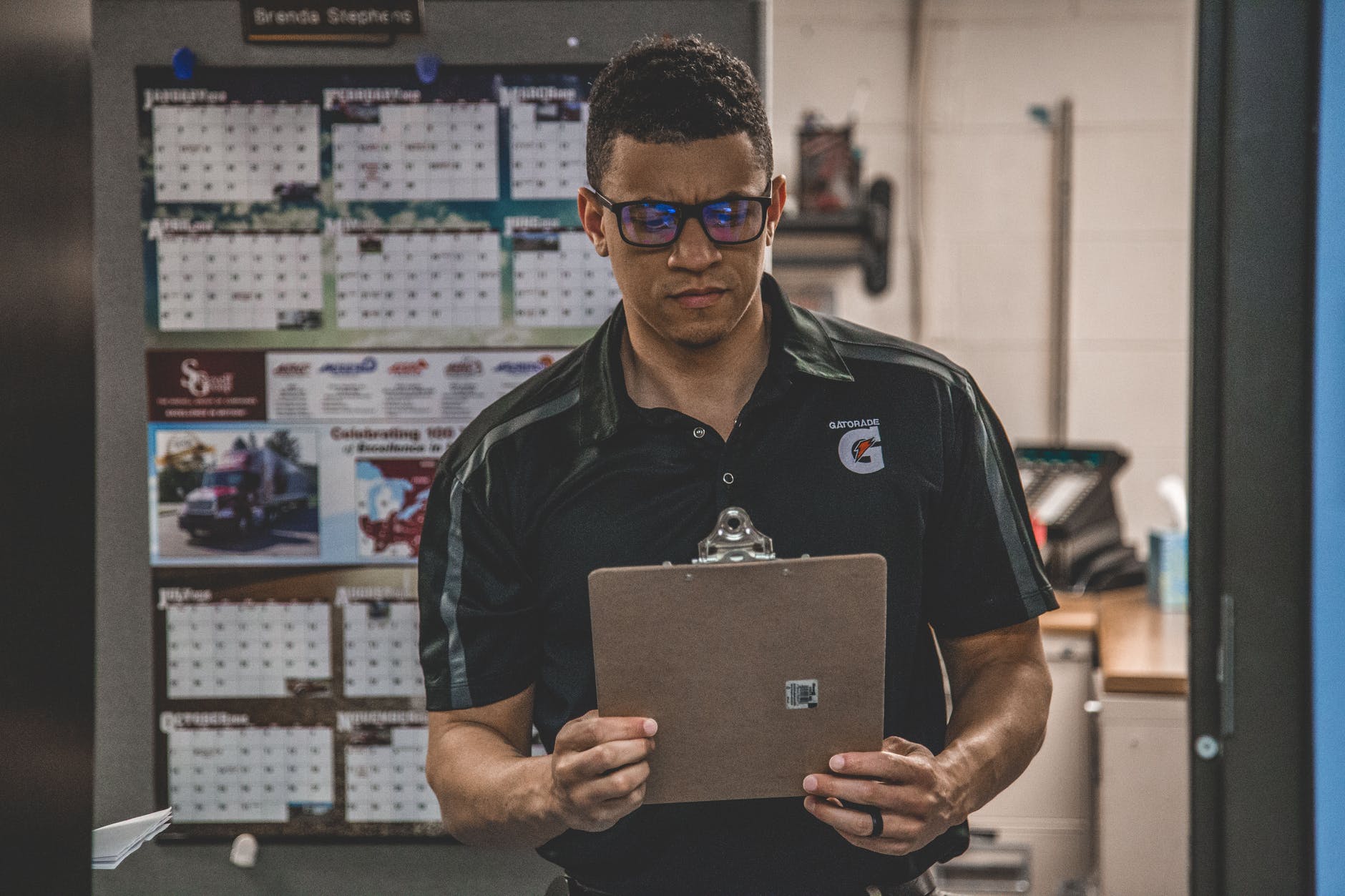Robots and self-driving cars that can pull items off shelves and transport them to another place in a pharmaceutical warehousing or manufacturing facility aren’t science fiction. These technologies, along with others, are being used in the automated movement of materials in many industries including the pharmaceutical industry. This type of automation is driven by efficiency, which improves accuracy and lowers labor costs.
Automating in-house transportation
 Mobile Industrial Robots’ MiR200 robot transports surgical needles between production and warehouse at Argon Medical Devices. Image courtesy Mobile Industrial Robots.
Mobile Industrial Robots’ MiR200 robot transports surgical needles between production and warehouse at Argon Medical Devices. Image courtesy Mobile Industrial Robots.
Automated systems can move semi-finished or raw goods from the warehouse to the production lines or between departments. They may also move finished goods from one line to another in the “facility for the future” in pharma manufacturing. AMRs are autonomous mobile robots that have built-in sensors and cameras. They also use software to navigate safely and avoid obstacles. Ed Mullen, vice president of sales for North America at Mobile Industrial Robots (MiR), is a vice-president of North America. Mullen says that these collaborative robots can increase productivity and efficiency and have a return on investment of less than one year.
Moving goods into and out of cleanrooms using AMRs is faster because employees must change their gowns when entering and exiting cleanrooms. AMRs make it easier to transport materials from warehouses to production areas. Mullen explains that AMRs enables warehouse employees to load materials into robots, then send them on missions to deliver material in real-time. AGVs can also be used for transportation and are faster but require physically mounted guides (such as rails or magnetic stripes) and are therefore not flexible for changing facility layouts. Although collaborative automation is growing rapidly, the trend towards collaboration in warehouses and production was not yet established five years ago. However, technology innovation has made it possible. Mullen predicts that there will be an increase in the use of collaborative robots over the next few years. “Warehouse automation is a clear target for cost savings. We see more companies asking for mobile robots such as ours to take over internal transportation. Skilled employees can also be redeployed to more valuable tasks than simply moving parts from A-B.”
Automating a Warehouse
Automated putaway and retrieval can be done in warehouses that store finished pharmaceutical goods. There are a variety of technologies available, including storage/retrieval machines (S/RMs), that replace the work done by standard fork trucks and gantry and articulating-arm robotics for case picking activities. These machines can be combined with conveyance or sortation equipment.
According to Jeff Christensen (Vice-President of Product at Seegrid), automation should be considered by a company before they consider the business case. This includes evaluating labor costs, worker safety, and regulatory compliance. A smart warehouse can start with automating the putaway process. Christensen suggests that companies can create a pilot program that uses self-driving pallet trucks to replace manual forklift movements from dock to storage. Companies can also connect small bin automated storage systems to transport items along with conveyor belts, from the sorting area up to the picking area. After these applications have been tested, companies may be able to expand their automation footprint and integrate software systems or increase the number of self-driving vehicles on-site.
WMS (website management system) is a sophisticated tool that supports the move to fully automated warehouses. Warehouses of pharmaceutical goods such as those that deliver to hospitals and pharmacies will be more dependent on software integrations shortly to link data across systems, manage inventory, improve performance, and increase efficiency. Christensen predicts that these systems will include WMS and software for smart machines such as self-driving cars.

Automation is a cost-saving and data tracking advantage.
Automation is justified for large volumes of products. However, it can also be justified for low-case volumes of high-value products that require cold storage conditions (e.g. blood plasma). He adds that warehouses have been redesigned to allow growth and lower construction costs. The savings from real estate and construction can often cover the majority of automation costs.
Brian Hudock (Vice-President, Tompkins International) says that automated movement in warehouses for finished pharmaceutical goods is required to better track product serialization/lots, and capture this information for all products leaving the pharma warehouse. He adds that it is crucial to be able to scan products at the saleable level using multiple tracking devices and 100% data collection.
Automation is also driven by the need to manage smaller shipments to support digital shipping. Hudock says that US pharma companies have so far taken a limited approach towards automation. Instead of using third-party logistics (3PL), partners to distribute smaller orders such as those to doctors, clinics, and home care, have used 3PL partners. “Because 3PL’s prefer longer contracts to invest into automation, the result has been mechanization and efficiency at best. The US distribution market, however, is on the verge of a major evolution as digital disruptors are entering the equation and are about to create a new channel in the form of increased direct-to-patient/home-care provider shipments,” predicts Hudock. Hudock predicts that Amazon and other disruptors will bring about changes in the supply chain, which will allow for the automation of both manufacturers and 3PL partners.

